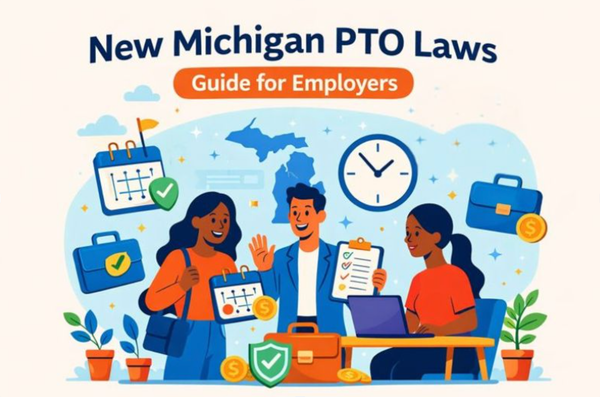Pros and cons of the 360 review process
Discover the benefits and drawbacks of the 360 review process. Learn how it promotes transparency, where it falls short and how to simplify reviews with Simpleperf.

If you’re interested in implementing a 360 review process in your business, but you’re not sure if the benefits will outweigh the drawbacks, then it’s time to critically assess the value of the process. In this BuddiesHR insight, we discuss the top pros and cons of the 360 review process and help you make the right decision for your company and your employees.

Key Takeaways
- 360-degree reviews collect feedback from managers, peers, direct reports, and the individual's self-assessment.
- Main pros: Balanced performance insights, increased self-awareness, data-driven feedback.
- Main cons: Time-intensive if done manually, risk of reviewer bias, reduced value without follow-up.
- Success depends on a clear purpose, automation of the review process, rater training, and connecting results to performance improvement.
- BuddiesHR’s Simpleperf makes implementing 360° reviews simple, unbiased, and actionable.
Table of Contents
- What is the 360° Review Process?
- Pros of the 360° Review Process
- Cons of the 360° Review Process
- When to Use – and When Not to Use – 360° Reviews
- Conclusion
- Frequently Asked Questions
What is the 360° Review Process?
Also called multi-rater feedback, the 360-degree review is a way to collect constructive feedback from multiple sources. By requesting feedback from the employee’s direct manager, peers, direct reports, and sometimes clients, a greater perspective is gained about the employee’s job performance.
Unlike the traditional performance review, which is one-directional (top-down), 360-degree feedback is designed to:
- Capture ongoing feedback about the employee’s strengths and provide constructive criticism for improvement.
- Reduce bias or blind spots that can naturally occur as a result of one person's ratings.
- Encourage a culture of comprehensive feedback that is transparent and focused on giving valuable feedback.
This review is often used for performance improvement, but it can also be used for leadership development and formal performance evaluations. Its success depends heavily on the implementation, i.e, how and why it should be part of your performance management cycle.
Implement your 360-degree review right now with Simpleperf
Pros of the 360-degree employee performance reviews
When used as part of a thoughtful and well-intentioned performance management cycle, the 360-degree assessment is a powerful developmental tool. It provides balanced insight into interpersonal skills, can support organizational goals, improves two-way communication, and helps human resources to steer training programs in the right direction.
1. Provides valuable insight
The strength of the 360 review process lies in the fairness and transparency it creates. Emphasis is removed from single-rater employee feedback and directed towards multiple stakeholders who can give a more balanced perspective.
When the whole picture is understood, professional development becomes targeted, and managers can provide employees with candid feedback for improvement.
Further reading: Too much or not enough? How often should performance reviews be conducted?
2. Supports organizational goals
The employee evaluation can often feel disconnected from organizational goals and the employee's development goals. One McKinsey report states that a productive environment is one that creates transparency, fosters open and honest dialogue, and has the right people in the right places. While this report does not directly discuss 360-degree feedback, it highlights the very principles on which it is built as important for organizational success.
3. Increased self-awareness and communication
A consistent challenge in any performance management process is a lack of well-rounded input, which highlights patterns in the employee’s behavior. This gives just cause for the employee to reject their manager’s feedback as one-sided.
A 360-degree review will gather feedback from multiple sources, highlighting patterns in behavior, attitudes towards professional relationships, work ethic, and personal growth, and strengthening the ability to assess progress fairly.
4. Strengthens leadership and team member collaboration
Leaders can only develop key leadership traits such as strong communication, decision-making, emotional intelligence, and business acumen when they receive specific examples about their performance. The same is true for building strong teams. When leaders and their teams regularly interact about their progress versus the organization’s goals, it increases not only employee engagement but trust and creativity.
5. Directs HR teams towards targeted training programs
A comprehensive view of a company’s performance patterns is invaluable in planning training programs. Traditionally, interventions are planned based on self-evaluation or manager input, without the much-needed insight into what skills, knowledge, behavior, and competencies are lacking throughout the organization.
When your HR team can see clearly, they can do what they’re good at - ensure that your company’s organizational goals are driven by all the right initiatives.
👉 Ready to make 360° reviews seamless and effective? Try Simpleperf by BuddiesHR to automate, simplify, and deliver actionable feedback—without the complexity.

Cons of the 360-degree employee performance reviews
Despite its strengths as a powerful tool for providing regular feedback that is insightful and actually contributes towards employee and organizational growth, the multi-source assessment does have drawbacks. It can be time-consuming, has a risk of bias amongst raters, and a lack of follow-through can diminish its value.
1. Time-consuming and resource-heavy
When multi-rater assessments are done manually, it is time-consuming to collect, process, and analyze data from all sources. Traditionally, this work fell on the HR team to coordinate and consolidate, with reports lagging well behind, taking a long time to compile.
However, automation has made it possible for the entire review process to be run digitally through the use of performance review software, and HRs love it. The software allows you to customize the entire process, pick reviewers, and send out scheduled reviews. Then it collects the information, with AI prompting detailed input from reviewers. Finally, it provides actionable summaries based on the information it has collected throughout the process.
2. Risk of bias
Whenever people work closely together, personal behavior biases can form. This is normal, but when it comes to performance evaluations, it creates a number of challenges. These challenges include:
- An overall evaluation based on one standout strength, which overshadows development areas.
- Performance evaluations based on recent interactions or performance events.
- When raters are overly generous or strict with certain employees, it leads to conflict amongst team members.
- More favorable ratings for employees who resemble the rater in background, personality, or work style.
- Early judgments about the capability of certain employees as high or low performers influence ratings.
Avoiding careless ratings or comments by reviewers is critical when implementing the 360-degree review. Training should be given to all employees on the purpose and intention of the evaluation, as well as how ratings are given fairly. Focusing on how to correctly give constructive feedback is an important goal of this training.
When using performance review software, AI comments and suggestions can be helpful in avoiding personal bias, but the influence of AI recommendations on raters is not yet well understood. Therefore, managers should also be trained to use the comments as a tool, and not the final decision maker in an evaluation. [1]
📚 Learn how you can conduct better reviews, free of bias and full of depth. How to prepare for a performance review as a manager provides a beginner’s guide to the review process.
3. Lack of follow-through after the review
Without follow-through from the direct supervisor or manager, the information collected by the 360-degree review process is meaningless, and really a waste of time and resources. It also leads to employees becoming critical about the process and its value.
After reviews, employees expect clear feedback, an understanding of how they can improve, how they can take part in promotional opportunities, and what learning would be useful in meeting objectives. Without this, the entire process disintegrates.
Avoid making this error and other common mistakes made by employers in a performance review with the help of performance review software. Run reviews like a pro from the start with Simpleperf by BuddiesHR.
When to Use – and When Not to Use – 360° Reviews
Quick answer: Use the 360 review process to support feedback in culture-positive environments, and avoid it in low-trust workplaces without suitable implementation structures.
Best for:
- Encouraging self-awareness and collaboration.
- Supporting coaching and mentoring programs.
- Environments that respond well to the use of technology as an engagement driver.
Avoid when:
- There’s low commitment to follow-up actions.
- You have adequate performance data from other sources.
Conclusion
The 360 review process is a powerful tool for gaining insight into multiple aspects of your employee’s performance, knowledge, and skills. As a developmental tool, it has the ability to create greater self-awareness for entire teams and the company, by highlighting patterns in performance and behavior. Automating the process simplifies the process for everyone, and produces AI summaries that can help direct training programs and development opportunities in the right direction.
Drawbacks such as rater bias, the drain on time and resources, and lack of follow-through after the review can be overcome by following the suggestions we’ve discussed.
👉Start now by exploring Simpleperf from BuddiesHR—built to automate 360° feedback, support development, and save time.

Frequently Asked Questions
1. What four components are essential in a 360° review?
A comprehensive 360 review process includes a self-appraisal, peer appraisal, manager appraisal, and subordinate appraisal. It sometimes consists of an external stakeholder, like a client, supplier, or business partner.
2. Can 360° feedback be used for promotions?
Yes, they can. However, they are commonly used to identify performance gaps and areas for development. A thoughtful and carefully implemented process should be in place when using the review for promotions to avoid bias.
3. How can we reduce bias in a 360° review?
Carefully train reviewers on the consequences of giving biased feedback, and focus on patterns rather than isolated comments. Scrutinize comments for recency bias, similarity bias, and confirmation bias, which are common in reviews.
4. How often should 360° reviews be conducted?
Annual or bi-annual reviews are commonplace, with regular informal check-ins becoming more popular in recent years - especially among the millennial generation workers.
References:
1. Exploring the role of anchoring bias in AI-assisted decision making




